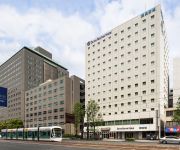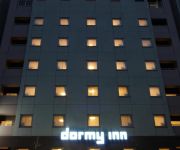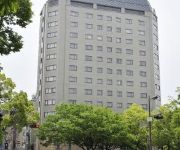Facts and Data
Webpages:
Official Unesco Page
The City of Hiroshima
View photos from OUR PLACE the World Heritage collection
Basis Data:
Unesco World heritage since: 1996
Size of heritage: 0.40 ha
- Buffer zone: 43 ha
Coordinates:
Longitude: 132,450°
Latitude: 34,383°
Summary
The Hiroshima Peace Memorial (Genbaku Dome) was the only structure left standing in the area where the first atomic bomb exploded on 6 August 1945. Through the efforts of many people, including those of the city of Hiroshima, it has been preserved in the same state as immediately after the bombing. Not only is it a stark and powerful symbol of the most destructive force ever created by humankind; it also expresses the hope for world peace and the ultimate elimination of all nuclear weapons.
Location on Map
Show bigger map on Openstreetmap
Hiroshima Peace Memorial (Genbaku Dome)
The Hiroshima Peace Memorial, also known as the Genbaku Dome, is a UNESCO World Heritage site located in Hiroshima, Japan. It serves as a powerful reminder of the devastating impact of nuclear weapons and stands as a symbol of peace and hope for a world free from nuclear warfare.
History
The Genbaku Dome was originally constructed in 1915 as the Hiroshima Prefectural Industrial Promotion Hall, designed by Czech architect Jan Letzel. It was a prominent landmark in Hiroshima, serving as a symbol of the city's industrial and cultural progress.
However, on August 6, 1945, during World War II, Hiroshima became the target of the first atomic bomb ever used in warfare. The bomb, named "Little Boy," was dropped by the United States' B-29 bomber, Enola Gay. The blast instantly killed an estimated 70,000 people and caused immense destruction, reducing the city to rubble.
Remarkably, the Genbaku Dome, located just 160 meters from the hypocenter of the explosion, managed to survive the blast. It was one of the few structures left standing amidst the devastation. The dome's skeletal remains became a poignant symbol of the tragedy and the urgent need for peace.
Current State
Today, the Hiroshima Peace Memorial stands as a solemn reminder of the horrors of nuclear warfare and a testament to the resilience of the people of Hiroshima. The Genbaku Dome has been preserved in its ruined state, with its exposed steel frame and shattered walls, as a permanent memorial.
The site attracts millions of visitors each year, who come to pay their respects and learn about the history of the atomic bombing. The Hiroshima Peace Memorial Museum, located nearby, provides a comprehensive account of the events leading up to the bombing, the immediate aftermath, and the long-term effects on the city and its inhabitants.
The Genbaku Dome and the surrounding Peace Memorial Park serve as a place for reflection, education, and advocacy for peace. The park features numerous monuments, memorials, and statues dedicated to the victims of the bombing and those who have worked tirelessly for disarmament and peace.
Every year on August 6th, the anniversary of the bombing, a solemn ceremony is held at the Hiroshima Peace Memorial Park. Thousands of people gather to remember the victims and reaffirm their commitment to peace. The ceremony includes speeches, prayers, and the release of paper lanterns on the Motoyasu River to symbolize the souls of the departed.
The Hiroshima Peace Memorial, with its iconic Genbaku Dome, stands as a powerful reminder of the devastating consequences of nuclear weapons. It serves as a beacon of hope, urging humanity to work towards a world free from the threat of nuclear warfare and to strive for lasting peace.
Hotels and places to stay
ANA Crowne Plaza HIROSHIMA
Daiwa Roynet Hotel Hiroshima
Comfort Inn Hiroshima Heiwa-Odori
Dormy Inn Hiroshima
Aster Plaza Hiroshima International Youth House
Comfort Hotel Hiroshima Otemachi
Business Hotel Million City
Hotel Sunroute Hiroshima
Petit Benefit Hotel Hiroshima
Sejour Fujita
Videos from the area
Videos provided by Youtube are under the copyright of their owners.



















